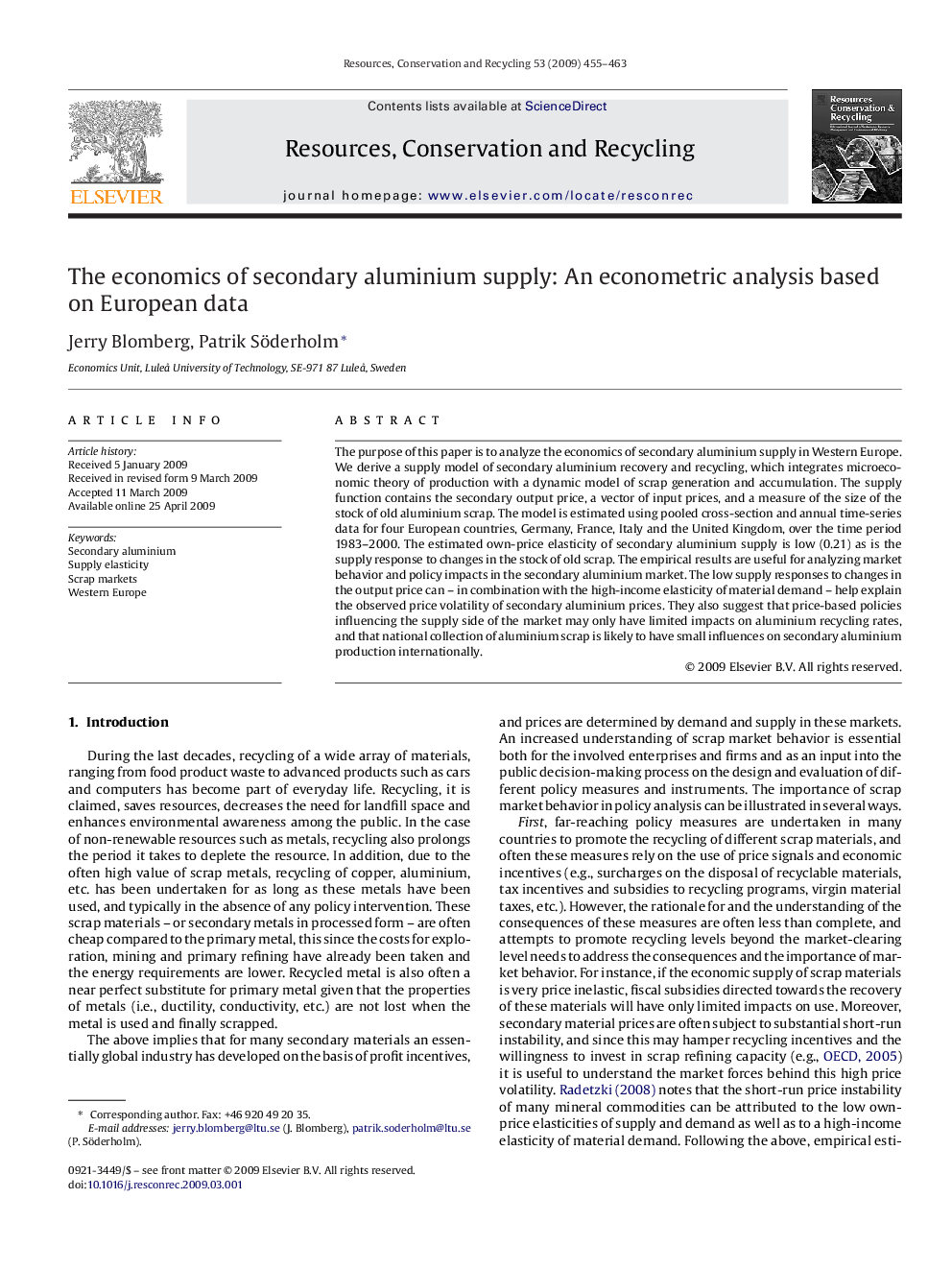| Article ID | Journal | Published Year | Pages | File Type |
|---|---|---|---|---|
| 1063725 | Resources, Conservation and Recycling | 2009 | 9 Pages |
The purpose of this paper is to analyze the economics of secondary aluminium supply in Western Europe. We derive a supply model of secondary aluminium recovery and recycling, which integrates microeconomic theory of production with a dynamic model of scrap generation and accumulation. The supply function contains the secondary output price, a vector of input prices, and a measure of the size of the stock of old aluminium scrap. The model is estimated using pooled cross-section and annual time-series data for four European countries, Germany, France, Italy and the United Kingdom, over the time period 1983–2000. The estimated own-price elasticity of secondary aluminium supply is low (0.21) as is the supply response to changes in the stock of old scrap. The empirical results are useful for analyzing market behavior and policy impacts in the secondary aluminium market. The low supply responses to changes in the output price can – in combination with the high-income elasticity of material demand – help explain the observed price volatility of secondary aluminium prices. They also suggest that price-based policies influencing the supply side of the market may only have limited impacts on aluminium recycling rates, and that national collection of aluminium scrap is likely to have small influences on secondary aluminium production internationally.
